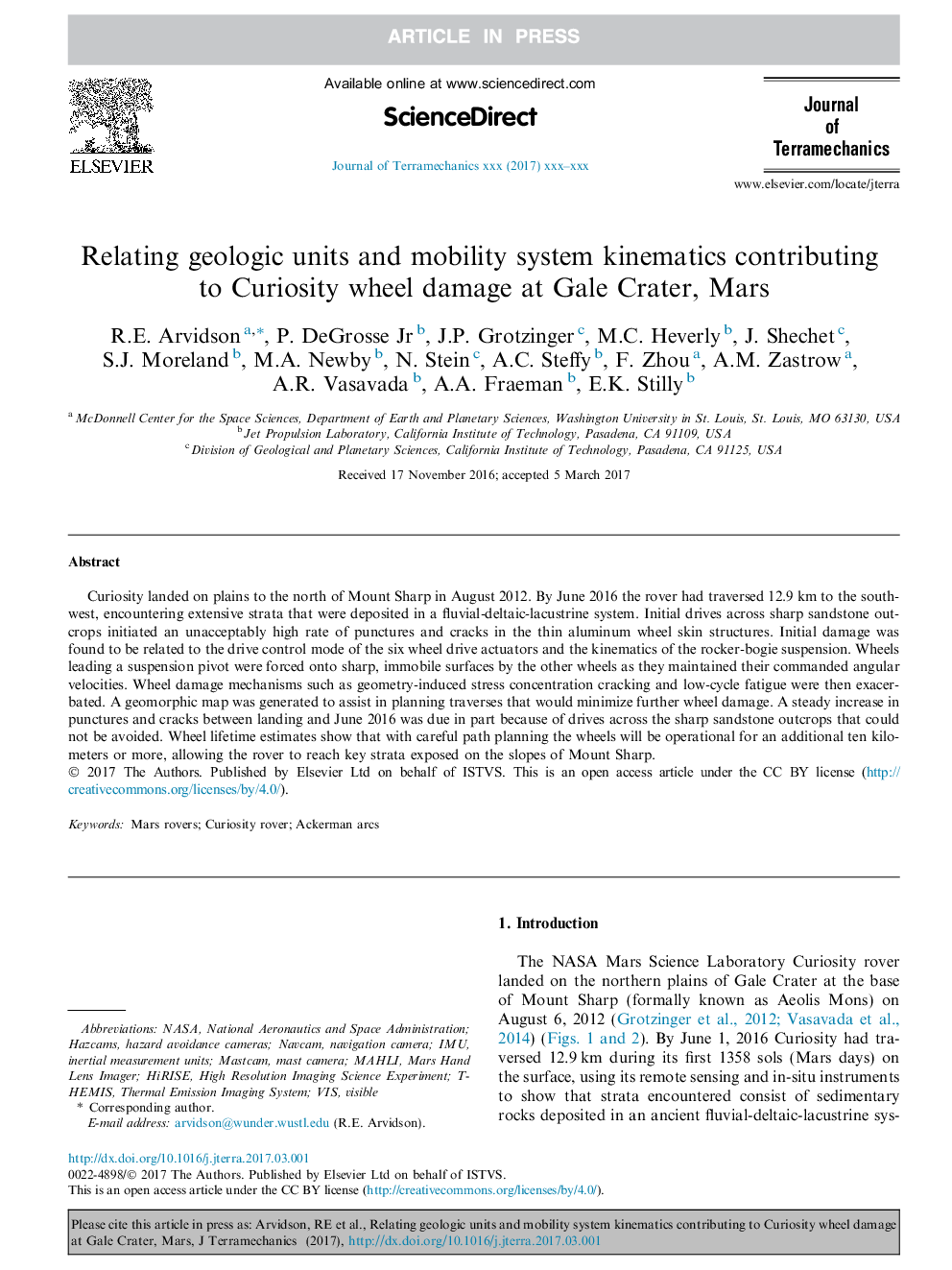| Article ID | Journal | Published Year | Pages | File Type |
|---|---|---|---|---|
| 7178449 | Journal of Terramechanics | 2017 | 21 Pages |
Abstract
Curiosity landed on plains to the north of Mount Sharp in August 2012. By June 2016 the rover had traversed 12.9Â km to the southwest, encountering extensive strata that were deposited in a fluvial-deltaic-lacustrine system. Initial drives across sharp sandstone outcrops initiated an unacceptably high rate of punctures and cracks in the thin aluminum wheel skin structures. Initial damage was found to be related to the drive control mode of the six wheel drive actuators and the kinematics of the rocker-bogie suspension. Wheels leading a suspension pivot were forced onto sharp, immobile surfaces by the other wheels as they maintained their commanded angular velocities. Wheel damage mechanisms such as geometry-induced stress concentration cracking and low-cycle fatigue were then exacerbated. A geomorphic map was generated to assist in planning traverses that would minimize further wheel damage. A steady increase in punctures and cracks between landing and June 2016 was due in part because of drives across the sharp sandstone outcrops that could not be avoided. Wheel lifetime estimates show that with careful path planning the wheels will be operational for an additional ten kilometers or more, allowing the rover to reach key strata exposed on the slopes of Mount Sharp.
Keywords
Related Topics
Physical Sciences and Engineering
Earth and Planetary Sciences
Geotechnical Engineering and Engineering Geology
Authors
R.E. Arvidson, P. Jr, J.P. Grotzinger, M.C. Heverly, J. Shechet, S.J. Moreland, M.A. Newby, N. Stein, A.C. Steffy, F. Zhou, A.M. Zastrow, A.R. Vasavada, A.A. Fraeman, E.K. Stilly,
